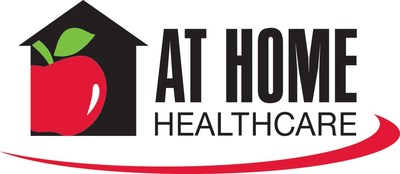Subjects: SCZ, AVO
At Home Healthcare President Shares Insight On Healthcare After COVID-19
TYLER, Texas, May 13, 2020 /PRNewswire/ -- The COVID-19 pandemic has revealed several shortcomings in the U.S. healthcare system along with new opportunities. The question remains, what have we learned about the healthcare system's capabilities or lack thereof during the coronavirus crisis and how might those lessons be applied in a post-COVID-19 world, whenever that day comes?
According to Rhonda Kelly, president of At Home Healthcare, a home health company serving 110 Texas counties, the COVID-19 crisis has reinforced the value of home health's critical role in the healthcare system. "Our number one priority in home health has always been to enable patients to maintain their health, wellbeing, and independence at home," she said. "By providing regular care and monitoring their condition, we can keep them out of the hospital or nursing home. That's become even more important now, to limit their exposure to COVID-19 and provide safe care at home."
The pandemic has revealed the limitations of hospitals as the focal point of acute care delivery. Hospital staffing and resources are allocated based on normal patterns of patient demand. It would be cost prohibitive for hospitals to gear up for peak patient demand, such as a pandemic, on an ongoing basis. Furthermore, the cost of scaling up resources in the short-term to prepare for a pandemic places extreme pressure on a hospital's financial stability. Already saddled with high losses due to providing care for the uninsured, hospitals rely on elective surgeries and other acute care delivery to balance their budgets. With COVID-19, hospitals were forced to free up beds for potential virus patients and postponed elective surgeries, putting many at near 50 percent capacity and in dire financial straits.
Our national COVID-19 experience thus far suggests that we must find alternative ways to deliver care and save the hospitals for their traditional role ? surgeries and providing acute care for patients needing 24/7 monitoring and treatment. Two alternative delivery models stand out, as COVID-19 has demonstrated their value to the overall healthcare system ? home health and telemedicine.
Home health services include care by a nurse, physical therapist, occupational therapist, speech-language pathologist, medical social worker, and home health aide. Medicare home health patients must be declared as homebound by their physician. Many are elderly and or disabled and have multiple health conditions, making them highly susceptible to COVID-19. Home is, by far, the safest place for them to receive care.
The issue of care delivery cost also comes into play. According to a study by the Journal of General Internal Medicine, home health care for acutely ill patients is 53 percent less expensive than hospital care. Additionally, surveys consistently reveal that approximately 90 percent of patients prefer to receive care at home. They typically do better in their own surroundings while remaining close to their loved ones.
Telemedicine has also received new-found prominence during the COVID-19 pandemic. Technological advances in recent years have heightened the promise for telemedicine, but bureaucratic red tape and inadequate reimbursement for providers has dampened the enthusiasm. That changed with COVID-19. The Centers for Medicare and Medicaid Services (CMS) released several changes, chief among them visits provided by telemedicine are considered office visits and are reimbursed at the same rate as regular, in-person visits.
At Home Healthcare's experience with telemedicine thus far suggests that it has its pros and cons depending on patient demographics. "We have generally seen more acceptance for telemedicine from our pediatric patients," Kelly said. "The parents are often technically savvy, and they help facilitate their child's therapy session with the therapist online. It's a different story with seniors. Many are technically averse, and they much prefer a face-to-face visit from our clinicians."
Kelly envisions a future in which home health and telemedicine work hand-in hand. "For example, flu season hits and the patient has a fever and cough. Is it the flu or COVID-19? Our nurse assesses the patient and speaks to the primary care physician via cell phone or tablet. They discuss the patient's symptoms and existing health conditions and map out a plan of care. So, the nurse becomes the doctor's eyes and ears by the bedside, but technology allows the doctor to remain fully engaged and providing direct oversight in the patient's care. It makes a whole lot more sense than asking a high-risk patient to drive to a hospital ER or doctor's office and risk exposure in a room full of other sick people."
SOURCE At Home Healthcare
These press releases may also interest you
|
News published on and distributed by:




